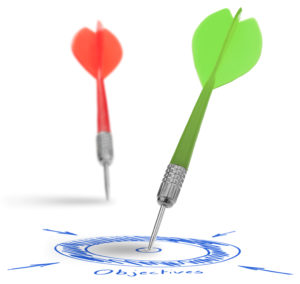Your Partner Portal is not a Website
Once in a while, we come across a prospect that puts a lot of stock into their partner portal’s appearance and wants it to look exactly like their website — beyond basic colors, logos, and branding.
But making your partner portal have the identical look and feel of their public-facing website can lead to significantly greater costs, sometimes 5 to 10 times the first-year cost of a PRM solution.
The worst part? That effort doesn’t always equate to an increase in partner engagement.
Why?
The truth is, look and feel don’t matter much to partners. If they can register deals, use MDFs, and leverage your resources and training, they’re gaining value.
Spending ample time and money creating or purchasing a beautiful portal may not meet your ROI expectations in the long run and will limit your GTM budget for strategic co-marketing and events in the process.
How is a Partner Portal Different From a Website?

A partner portal isn’t the same as a company website. It’s not a marketing tool — it’s a critical partner engagement and productivity platform.
Because a partner portal is a business application, not a marketing website, the driving factors for the user interface are fundamentally different.
Websites need to capture a prospect’s attention and convert them to a lead. Look, feel, imagery, information, and navigation are all focused on that one outcome. Websites are constantly being optimized for that singular purpose.
Partner portals, by contrast, have multiple drivers behind the user interface. Ideally, partners are already “converted” by the time they join your portal based on conversations they’ve had with your partner management team. That means the partner portal must provide intuitive access to relevant information, partner workflows, and the ability to offer actionable feedback.
Key Partner Portal Success Drivers
Simplicity, consistency, and familiarity of your partner portal UI are drivers of program success:
- Your enterprise partner portal is for partners you’ve already won. The goal now is to try to make them productive. Window dressing doesn’t impact productivity — good UI design does.
- Your partners’ goal is to make more sales. To do that, they need the right information to get up to speed quickly. Spending extra budget on look and feel isn’t necessarily going to move the needle.
- A partner portal tailored to the partner experience increases portal usage and partner engagement. For your partner portal to match your website, you must update it every time your website is refreshed. Typically, users aren’t a huge fan of major changes to UI. If they can find all the materials they need at first glance, they’ll be much more likely to use them.
- Business application user interfaces need to be intuitive. Partner portals that adopt UI conventions of widely used social applications such as Facebook make it easier for users to find and use your resources. Their mind is already trained to look for standard navigation and iconography, decreasing the chances they get distracted by marketing messaging or images, which, in reality, are really meant to impress your customers more than your partners.
- You and your partners want a fast ramp-up time. Choosing Partner Relationship Management (PRM) software designed under the principles and guidelines of a business application will result in quicker onboarding, ultimately leading to greater engagement and productivity.
Good Portal Design Starts With the Homepage
The homepage is the first thing a partner sees when they log into your portal. And they should be able to figure out how to download marketing assets, get trained, request marketing development funds, and register deals right off the bat. Unlike a website that caters to a much wider range of visitors, your partner portal audience generally is looking to accomplish a specific goal.
The best partner portal software gives allows admins to customize their homepage to point partners to the modules and resources they need to be successful.
For example, within Channeltivity, you can:
- Create buttons that link straight to specific modules or areas of the Resource Library
- Display partner manager contact information based on region or partner type
- Draw partners’ eyes to newly posted documents and other resources
- Show deal and referral progress or recently assigned leads
- Upload a video from your head of partnerships
- Share timely news and announcements
- Add a personalized welcome message
- Embed relevant articles
…and more. Check out our list of best practices for effective homepage designs — along with several examples — here.
Pick the Right PRM
The growth of your channel partner program is dependent on meeting your strategic goals, whether that’s an increase in partner engagement, consistent deal registration, MDF use, ease of lead distribution, or all of the above. When choosing your PRM, select a solution that truly enables your partners — the fuel for your partner-sourced revenue engine. And remember your partner portal is not a website!
Partners are more likely to use a tool targeted to their specific program needs, geography, or role in the company. That’s why Channeltivity’s partner portal software is highly flexible, and customizable to each partner. This targeted approach decreases time to value, increasing engagement and boosting your bottom line.
For more on selecting the right PRM solution for your channel program, read our free ebook, ‘9 Questions to ask before selecting a Partner Relationship Management Solution.’
More Helpful Resources:
Perfect Your Deal Registration Process in 7 Steps
How to Choose the Best Partner Portal for Your Team